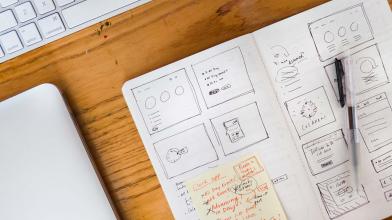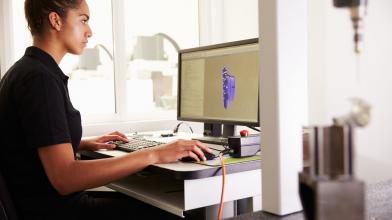
At first glance, it seems 3D printing could replace a lot of the traditional aspects when it comes to manufacturing a product. Many businesses are acquiring in-house 3D printers to explore their benefits. The majority of these in-house 3D printers are inexpensive, desktop size, and typically the FDM (fused deposition modeling) type. The FDM technology is when the material is continually laid on top of itself, such as a thermoplastic like ABS or PLA, in order to form the object.
The first benefit of FDM 3D printing is the ease of printing an object. Once the printer is calibrated and the CAD file is uploaded, the operator literally just pushes (or clicks) a button and the printer starts up. The automated printer is so reliable that the operator could leave for hours and return with no issues.
Another 3D printing benefit is its speed. Depending on size and complexity of the design being printed, a 3D printer can create an object anywhere between 2 – 24 hours. This quick turn-around is very appealing when it comes to creating a product prototype through FDM 3D printing. Traditionally with machined prototypes, it can take up to two weeks to receive a prototype depending on where it is coming from and the creation method. The speed that a 3D printer provides with prototyping could significantly reduce a product’s time to market.
The speed that a 3D printer provides with prototyping could significantly reduce a product’s time to market.
A final benefit of the 3D printing technology is its ability to fulfill low quantities. With traditional manufacturing, the higher quantity of an item produced means that the cost per piece decreases. But what if you want only 2, 5, or 10 parts? It would be extremely expensive to produce such a low quantity with traditional methods. With 3D printing technology, short-run quantities are cost-effective and easily produced.
With these 3D printing advantages, it is an appealing technology for product development and manufacturing. However, there are some limitations of 3D printing when it comes to using the FDM technology for mass production.
The first downside of FDM 3D printing is that the printed part lacks long-term durability compared to a part made with traditional injection molding. Through injection molding, the part is created as one single piece whereas with FDM the part is created through multiple, thin layers. With this layering technique, there are more areas for weak spots to occur.
The material used in injection molding is also stronger than the thermoplastics used in FDM. The injection molding materials will cure once it is exposed to air. With thermoplastics, it can be melted and solidified many times before degrading. This is a downfall for 3D printed products as then they cannot withstand extreme environmental conditions. If the piece is in too hot of conditions, it will end up deforming and melting or if it is in too cold of an environment, it may end up cracking.
Another disadvantage of FDM 3D printing is its inability to produce at a fine resolution. Due to the layering method of this technology, there will be many rigid edges on the surface of the part that require additional finishing methods, such as sanding, to make it smooth. The tolerances are also larger with 3D printing which can lead to inconsistencies between multiple prints of the same part. When producing at larger quantities, typically these variances would not pass quality control.
Lastly, FDM 3D printing is inefficient with resources when it comes to mass production. Even with multiple 3D printers running concurrently, the time required to print the large output is exorbitant. The printed piece would then still need additional time for surface finishing. With traditional manufacturing methods, you can create multiple perfect pieces simultaneously much faster than with a 3D printer. Due to the time requirements, the cost per unit by 3D printing will be higher– making your product margin smaller.
3D printing technology continues to advance through the years. Rightfully so, it has a lot of hype around it. It offers many benefits throughout the product development process with its speed and ease – particularly with prototyping. However, when it comes to mass production, 3D printing lacks the benefits of traditional manufacturing processes.
With all technology, there is an appropriate time and place for it. Therefore, 3D printing should be viewed as a complementary technique to product development and production, but not necessarily a full replacement to traditional manufacturing aspects.



